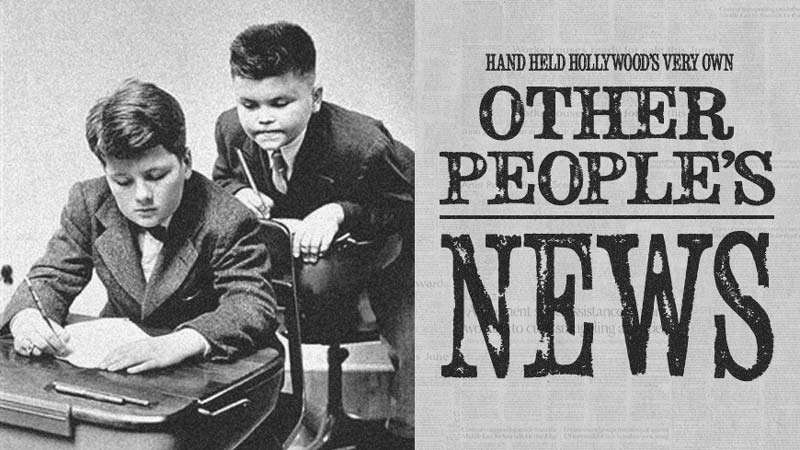Ever shot video with an iPhone 3GS? Ever tried panning, or shooting a fast moving subject? If so, then you are no doubt aware of ‘rolling shutter.’ It’s that weird looking warble that makes everything look like it’s made of Jello… hence the commonly used term, Jellocam. It’s not just the iPhone that suffers from this debilitating condition. It effects many low cost digital cameras.
But fear not, that wiggly, warbly, wangly (sorry, just needed a third w) footage may soon be jello-free! The Foundry, a visual effects software company out of the U.K., has released the appropriately named Rolling Shutter. It’s a plug-in for Adobe After Effects, and the Foundry’s Nuke, designed to aid the visual effects process. However, with a few adjustments, Rolling Shutter may be able to reduce or remove your iPhone video’s wiggles.
Keep in mind, this is not about removing camera shake. A tripod (or camera grip) is your best bet to compensate for jittery hands. Rolling Shutter is just about removing… well… rolling shutter.
For a better description of the problem, let’s turn to an excerpt from the Rolling Shutter manual:
Modern digital video cameras fall into two categories: cameras with CCD sensors and cameras with CMOS sensors. Many CMOS chip designs effectively have a rolling shutter. Unlike global shutters that expose the entire frame simultaneously, rolling shutters record each frame one scan line at a time, “rolling” through the frame.
Because there is a time lag between the first scan line and the last, not all parts of the image are recorded at exactly the same time. If the subject or the camera moves during the exposure, the recorded frame may exhibit one of the three rolling shutter artifacts: skew, wobble, or partial exposure.
Got it? Ok… let’s fix it.
You start by importing your footage into After Effects or Nuke. You then apply the Rolling Shutter effect, tweak the settings to taste, and render out your final shot. I won’t go into the specifics, but you can download a demo to try for yourself. Rolling Shutter won’t fix every problem, but it does wonders with minor jello issues.
I ran some tests this morning. Here’s the results:
One final note. This is not a cheap fix. Rolling Shutter starts at a whopping $500 per license (or $100 to rent). And that’s on top of the expense for owning After Effects or Nuke. Unless your last name starts with ‘T’ and ends with ‘rump’, you’re not going to be using this to correct footage of your kid’s T-Ball game. Instead, I’m suggesting this only as a means to fix crucially important footage that you HAD to shoot with your iPhone (because it was the only camera available at the time).
So, if you’ve got jellocam footage of aliens landing in your backyard, you should already be pulling out your credit card. Everyone else… maybe not… but it’s nice to know the solution is out there when you need it!






4 Responses
> It’s a plug-in for Adobe After Effects, and Apple’s Shake
I think you mean Nuke (which is made by The Foundry), not Shake..
> this solution is meant for professionals who have to fix the footage […]
To completely miss your joke, it’s not really intended to "fix" footage, but rather straighten it to get a 3D track, and then to distort any composited elements on top of the original, skewed video.. But it does work well enough you can often use the output as a final shot..
DBR,
Yes, you’re absolutely right! Thanks for catching that. I’ve fixed the error.
And yes, Rolling Shutter’s primary use is correcting footage prior to visfx work (including 3D tracking). That’s, in fact, how I recently used it. But, I’m suggesting its use here as a way of correcting the horrible skew that accompanies nearly all iPhone 3GS video. I can’t imagine anyone using iPhone video for visfx which is why I avoided the topic, but I suppose anything is possible. To avoid confusion, I’ve added a little language to the article regarding its use as a vfx tool.
Thanks again!
Best,
-Taz
Excellent article :) Could you publish the settings you used in the Foundry plugin to achieve the fix. I’m guess they are not the default.
thanks
Chris
Hi Chris,
I looked back at my After Effects project to get the settings. Here’s what I had:
Correction: -1
Vector Detail: .25
Smoothness: .50
Shutter Sync: .50
These settings were FAR from scientific. I just played with the numbers until I got something I liked. And, as I recall, each speed benefited from slightly different settings.
Hope that helps!
P.S. A lower cost option has entered the market called "Lock N Load", although I have yet to test it.